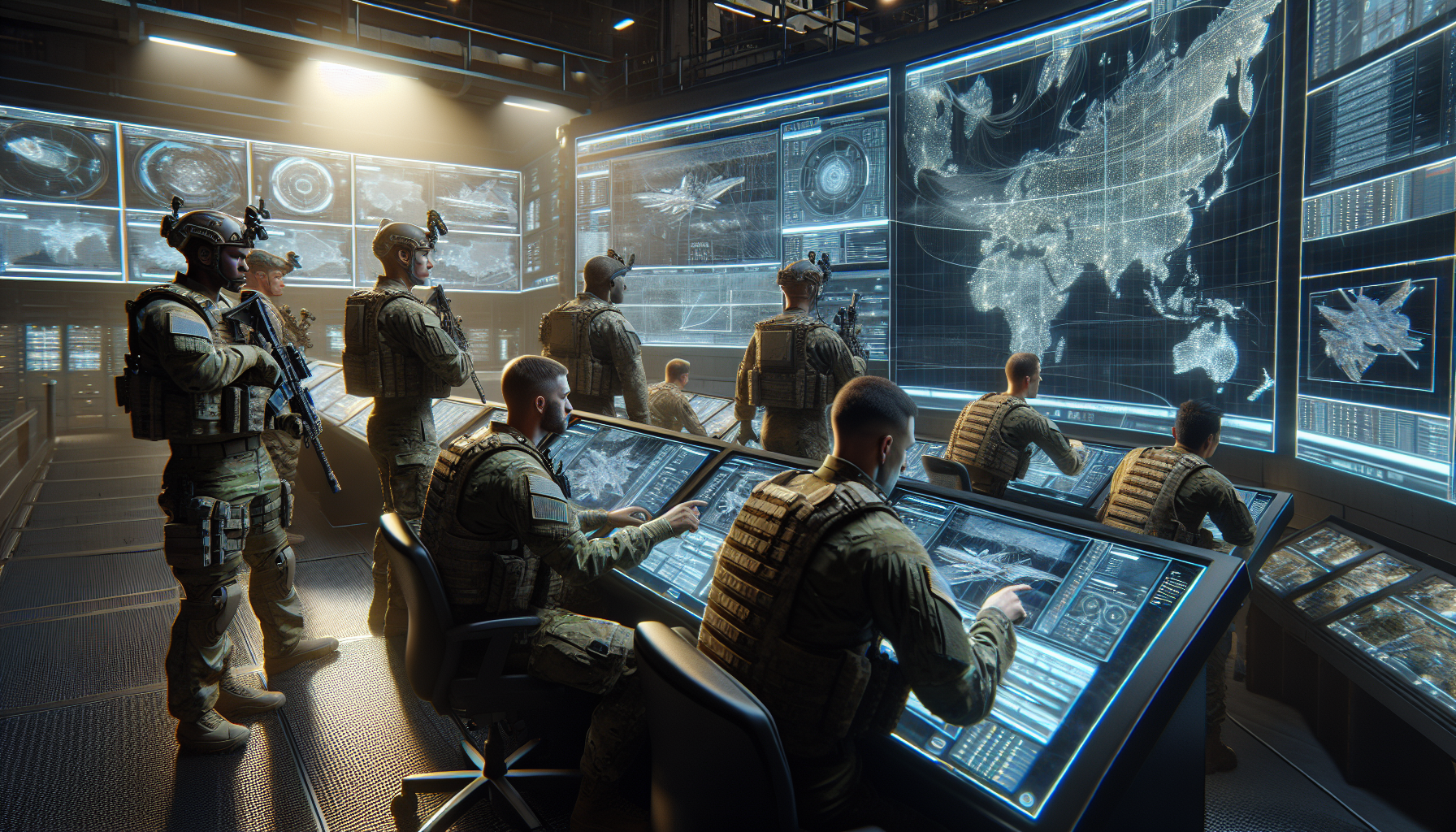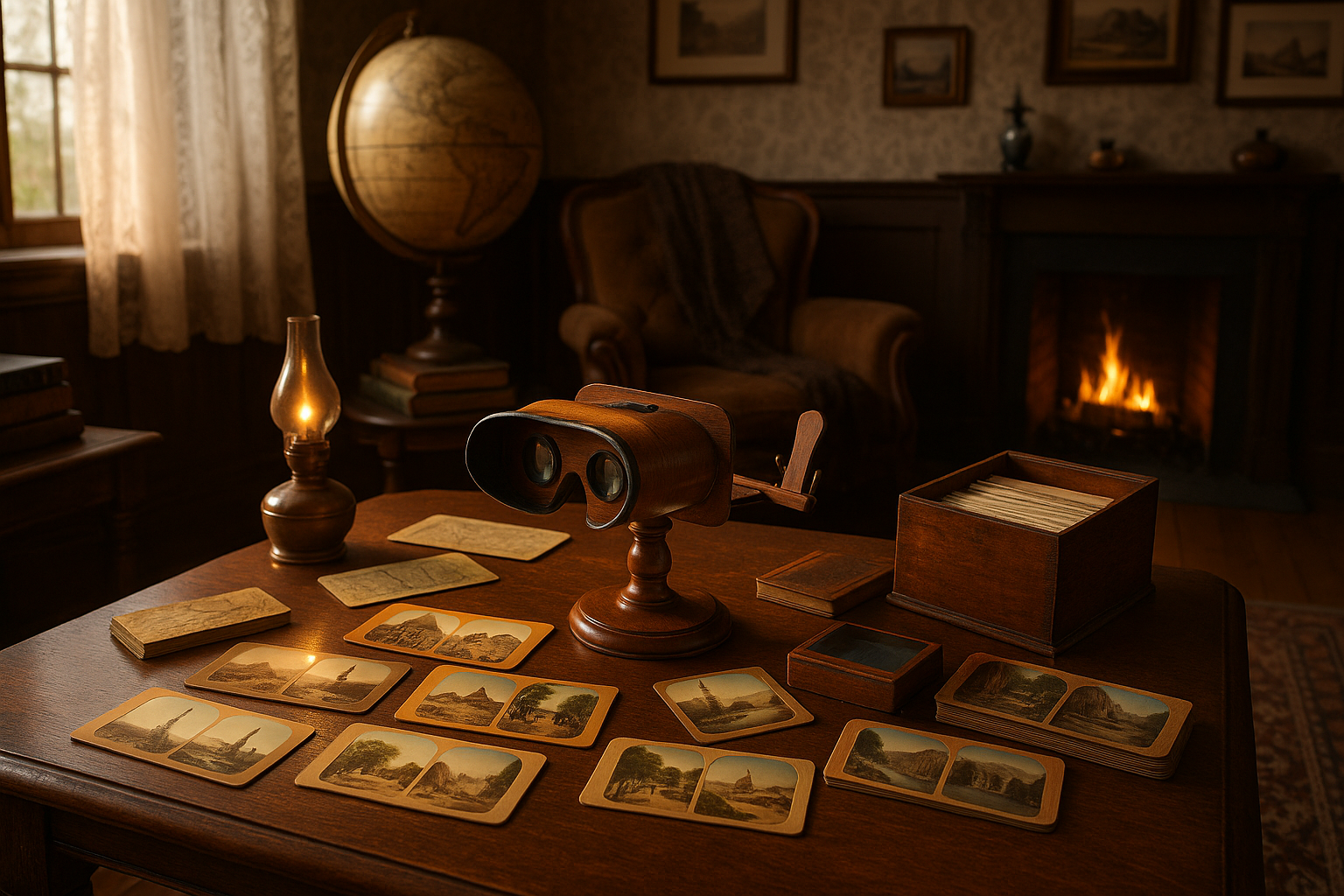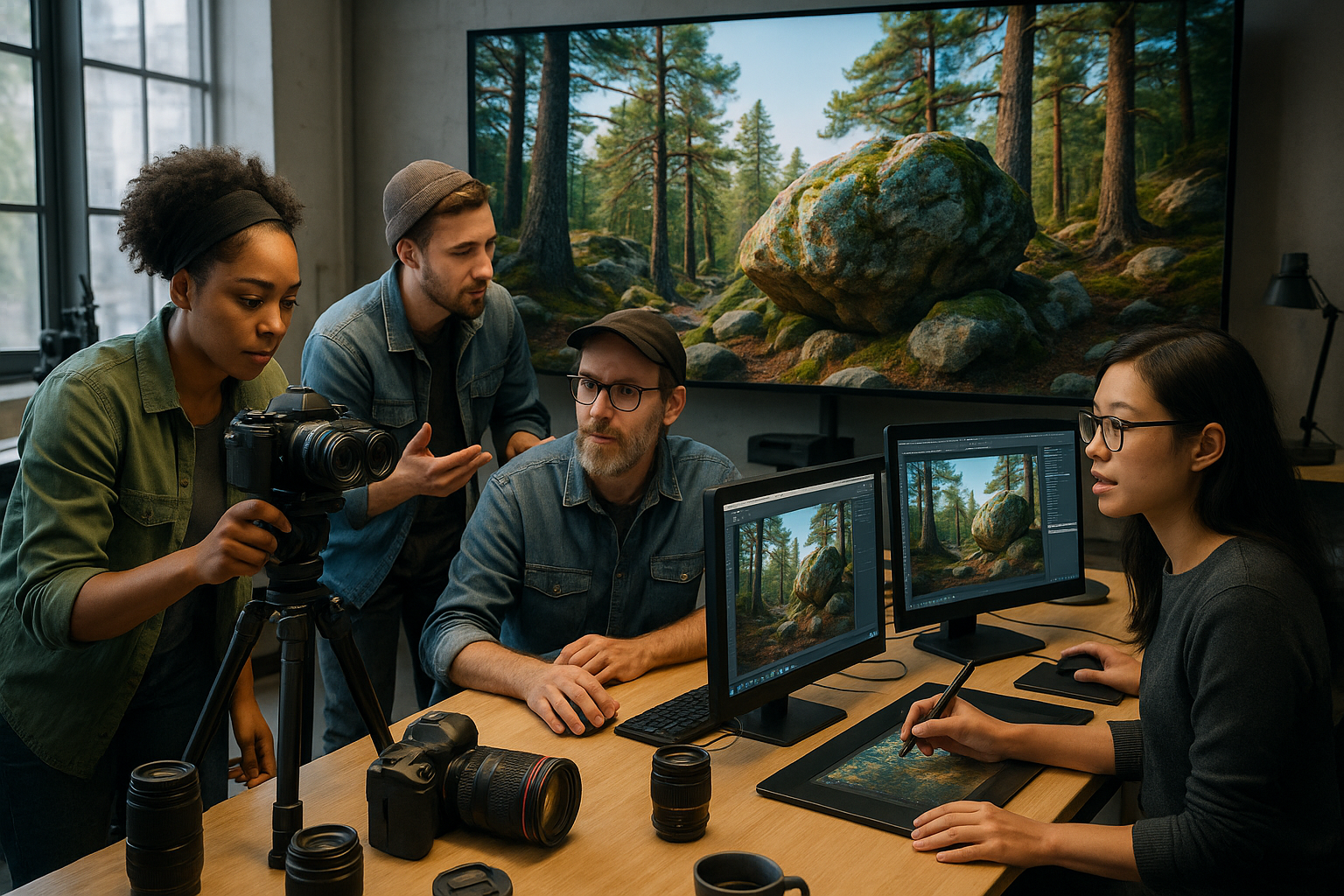In the annals of military history, technological advancements have always played a pivotal role in redefining the battlefield. From the invention of gunpowder to the development of drones, each leap forward has not only changed the way wars are fought but also altered the very nature of military strategy and tactics. Today, as we stand on the cusp of yet another groundbreaking transformation, the advent of 3D viewing technology promises to revolutionize military operations in ways previously imagined only in the realm of science fiction. This powerful tool is poised to redefine strategic planning, enhance situational awareness, and improve decision-making processes, ultimately tipping the scales of warfare in unprecedented ways. 📡
Imagine a scenario where military commanders can virtually step into a battlefield, thousands of miles away, and assess the terrain, identify potential threats, and devise strategies as if they were physically present. This is no longer a distant dream but a tangible reality, thanks to 3D viewing technologies. By providing an immersive, real-time perspective of the battlefield, these technologies enable military personnel to visualize complex environments with stunning clarity. In this article, we will explore the multifaceted impact of 3D viewing in military operations, diving into its applications in mission planning, training, and real-time engagement. We will also examine the challenges and ethical considerations that accompany this technological evolution, ensuring a comprehensive understanding of its potential and limitations.
As we delve deeper, we will uncover how 3D viewing enhances situational awareness, offering military strategists a bird’s-eye view of the battlefield that is both dynamic and detailed. From urban warfare scenarios to expansive open-field engagements, the ability to view and manipulate three-dimensional landscapes allows for more informed decisions and precise tactical maneuvers. Furthermore, we will discuss the implications for training, where virtual reality simulations driven by 3D technology prepare soldiers with unparalleled realism and effectiveness. Finally, we will address the potential risks and ethical dilemmas, such as privacy concerns and the increasing reliance on technology in combat scenarios. Join us on this journey as we explore how 3D viewing is not just a technological advancement, but a transformative force in the art and science of warfare. 🌍
The Evolution of Military Technology
The transformation of military technology over the centuries has been both remarkable and relentless. From the rudimentary weapons of ancient times to today’s sophisticated machinery, the evolution reflects human ingenuity and the relentless pursuit of dominance and protection. The modern battlefield is a far cry from its predecessors, thanks in part to technological advancements that have revolutionized warfare.
One of the most significant leaps in military technology in recent times is the incorporation of 3D viewing technologies. These innovations have not only transformed how operations are conducted but have also fundamentally altered strategic planning and execution. To truly understand the implications of these advancements, it is essential to explore how 3D viewing fits into the broader narrative of military evolution.
The introduction of 3D viewing in military operations is a game-changer. It allows for immersive experiences that can significantly enhance situational awareness. This technology enables military personnel to visualize terrains and environments with a clarity that was previously unattainable. As we delve deeper, it becomes apparent that the impact of 3D viewing extends far beyond mere visualization.
The Role of 3D Viewing in Strategic Planning
3D viewing has revolutionized strategic planning in military operations. Traditionally, planning relied heavily on two-dimensional maps and verbal descriptions. However, these methods often left much to the imagination, which could lead to misinterpretations or misjudgments. With the advent of 3D technology, these limitations are being addressed effectively.
By utilizing 3D models, military strategists can gain a comprehensive understanding of the terrain, allowing them to devise strategies with precision and accuracy. This technology facilitates better decision-making, as it provides a realistic depiction of the battlefield. The following table highlights the differences between traditional and 3D viewing methods:
| Aspect | Traditional Methods | 3D Viewing |
|---|---|---|
| Visualization | 2D Maps and Models | Immersive 3D Models |
| Detail Level | Limited | High |
| Interpretation | Subjective | Objective and Accurate |
As seen in the table above, 3D viewing enhances visualization and provides a higher level of detail, which is crucial for accurate strategic planning. The immersive nature of 3D models allows military personnel to ‘walk through’ the terrain, offering insights that are not possible with traditional methods.
Applications in Training and Simulation
The utility of 3D viewing is not limited to strategic planning; it is also a vital tool in training and simulation. Modern military training increasingly relies on simulations to prepare personnel for real-world scenarios. By incorporating 3D technologies, these simulations can be made more realistic and effective.
One of the primary benefits of 3D simulation in military training is the ability to create detailed and dynamic environments. Trainees can engage with these environments interactively, which enhances learning and retention. This immersive approach helps bridge the gap between theoretical knowledge and practical application.
Furthermore, 3D viewing in training allows for the simulation of various scenarios, including those that are high-risk or logistically challenging to replicate in real life. This capability ensures that military personnel are well-prepared for a wide range of situations. Watch the video below for a deeper understanding of how 3D simulations are transforming military training:
Revolutionizing Military Training with 3D Simulations – MilitaryTech Channel
Enhancing Situational Awareness
In military operations, situational awareness is paramount. The ability to understand and interpret the environment in real-time can mean the difference between success and failure. 3D viewing plays a crucial role in enhancing situational awareness by providing a comprehensive and realistic representation of the battlefield.
Unlike traditional methods, which can be static and limited, 3D models offer a dynamic perspective that can be updated in real-time. This capability allows military personnel to assess changes in the environment quickly and accurately, making informed decisions as situations evolve. Additionally, 3D viewing enables the visualization of complex data sets, such as weather patterns and troop movements, in an intuitive manner.
Consider the following benefits of 3D viewing in enhancing situational awareness:
- Real-time updates and monitoring.
- Comprehensive visualization of complex data.
- Improved communication and coordination among teams.
The Impact on Communication and Coordination
Effective communication and coordination are essential components of successful military operations. 3D viewing technologies enhance these aspects by providing a common visual reference that can be accessed and interpreted by all team members. This shared understanding is crucial for coordinating efforts and ensuring that everyone is on the same page.
Furthermore, 3D models facilitate better communication between different units and branches of the military. By providing a clear and detailed representation of the operational environment, 3D viewing helps eliminate ambiguities and potential misunderstandings. This clarity is especially important during joint operations, where multiple teams must work together seamlessly.
In conclusion, the integration of 3D viewing technologies in military operations marks a significant advancement in how warfare is conducted. From strategic planning to training and situational awareness, these technologies offer unparalleled benefits that enhance the effectiveness and efficiency of military operations. As we continue to explore and develop these innovations, the potential for further transformation in the field of military technology remains vast and exciting.

Conclusion
In the rapidly evolving landscape of military operations, the integration of advanced technologies is not just advantageous but essential. This article has delved into the transformative role of 3D viewing technology in revolutionizing warfare, highlighting its significant impact on strategy, precision, and safety. The adoption of 3D visualization tools in military contexts offers enhanced situational awareness, improved decision-making capabilities, and superior strategic planning. By allowing military personnel to visualize complex terrains and scenarios in three dimensions, these tools provide a level of depth and understanding that was previously unattainable with traditional methods.
We began by exploring the historical context, where we noted that military strategy has always been deeply intertwined with technological advancements. The introduction of 3D technology represents a natural progression in this trajectory, building on past innovations such as GPS and satellite imaging. It offers a more nuanced and detailed perspective that can be pivotal in critical decision-making processes. The ability to visualize a battlefield in 3D, for example, allows commanders to assess threats, plan movements, and predict enemy actions with unprecedented accuracy.
The article further examined specific applications of 3D viewing in military operations, ranging from training simulations to mission planning. Training simulations enhanced by 3D visualization provide soldiers with realistic and immersive environments, allowing them to practice and perfect maneuvers without the risks associated with live exercises. This not only reduces costs but also increases the effectiveness of training programs, ensuring that soldiers are better prepared for real-world scenarios.
Moreover, in mission planning, 3D viewing tools enable planners to explore different tactical approaches by visualizing potential outcomes in a dynamic and interactive manner. This can be crucial in identifying the best course of action in complex operations where multiple variables must be considered. The ability to simulate various scenarios and outcomes ensures that military strategies are robust and adaptable to changing conditions on the ground.
The importance of 3D technology in military operations extends to reconnaissance and surveillance as well. By utilizing advanced imaging techniques, military forces can gather and analyze data more efficiently, leading to faster and more accurate assessments of enemy positions and movements. This information can be critical in minimizing casualties and ensuring mission success. Furthermore, the integration of 3D viewing with other technologies such as artificial intelligence and machine learning can enhance predictive capabilities, enabling military forces to stay one step ahead in dynamic and unpredictable environments.
However, the adoption of 3D technology in military contexts is not without its challenges. Issues such as data security, integration with existing systems, and the need for ongoing training and development are significant considerations that must be addressed. Nonetheless, the potential benefits far outweigh these challenges, making the pursuit of solutions an essential endeavor for modern military organizations.
The significance of these advancements cannot be overstated. By revolutionizing how military operations are conducted, 3D viewing technology not only improves the effectiveness and efficiency of military strategies but also enhances the safety and security of military personnel. This is a critical consideration in an era where the nature of warfare is increasingly characterized by asymmetrical threats and unconventional tactics.
As we conclude this exploration of 3D viewing in military operations, it’s important to recognize the broader implications of this technology. Beyond the battlefield, these advancements have the potential to drive innovation in other sectors, including disaster response, urban planning, and even healthcare. The skills and knowledge developed in military applications of 3D technology can translate into civilian contexts, fostering cross-sector collaboration and innovation.
In light of these insights, I encourage you, the reader, to reflect on the transformative potential of 3D technology and its broader implications. Whether you are a professional in the field, a student of military history, or simply someone interested in technological advancements, the impact of 3D viewing on military operations is a testament to the power of innovation in shaping our world.
Please feel free to share your thoughts and perspectives on this topic in the comments section. Engage with others who share your interest, and consider sharing this article with colleagues or friends who may benefit from this discussion. The more we engage with these ideas, the more we can contribute to the ongoing dialogue around technology and its role in modern society.
In closing, let us remember that the ultimate goal of technological advancement in military operations is to enhance security and peace. By leveraging the power of 3D viewing, we are taking a significant step towards achieving a safer and more informed world. Let’s continue to support and advocate for innovations that promote understanding and collaboration, ensuring that technology serves as a force for good in our ever-evolving global landscape. 🌍
For further reading, you may explore sources such as Defense News or Jane’s Information Group, which provide comprehensive analyses and updates on military technologies and strategies.
Toni Santos is a visual historian and artisan whose creative lens is captivated by the forgotten marvels of antique optical devices. Through his thoughtful storytelling, Toni revives the instruments that once transformed light into wonder—camera obscuras, magic lanterns, kaleidoscopes, and other ingenious tools that shaped our earliest visual imaginations.
His journey is rooted in a fascination with how humans have long sought to bend, reflect, and reveal the unseen. Whether tracing the mechanical poetry of 19th-century projectors or illustrating the tactile elegance of early lenses, Toni’s work invites us to see vision itself as an evolving art form.
Blending handcrafted design with historical inquiry, Toni brings to life the material soul of these devices—celebrating not just how they functioned, but what they meant. His creations and curated stories illuminate a world where science, illusion, and beauty were intricately linked through glass and brass.
As the curator of Vizovex, Toni shares detailed studies, reconstructed artifacts, and immersive content that help others rediscover the origins of visual technology and the magic of analog perception.
His work is a tribute to:
The craftsmanship behind early visual instruments
The wonder of seeing through the eyes of another century
The intersection of optics, art, and imagination
Whether you’re a collector, a designer, or someone drawn to the lost poetry of vision, Toni welcomes you into a world where light is a storyteller—one prism, one lens, one forgotten invention at a time.





